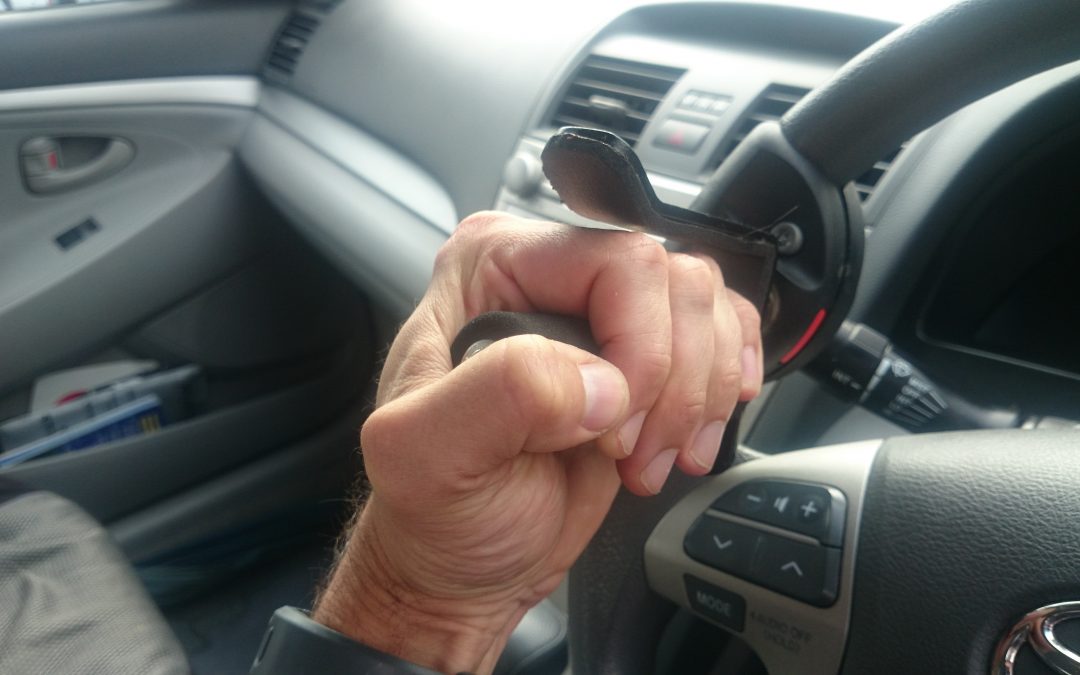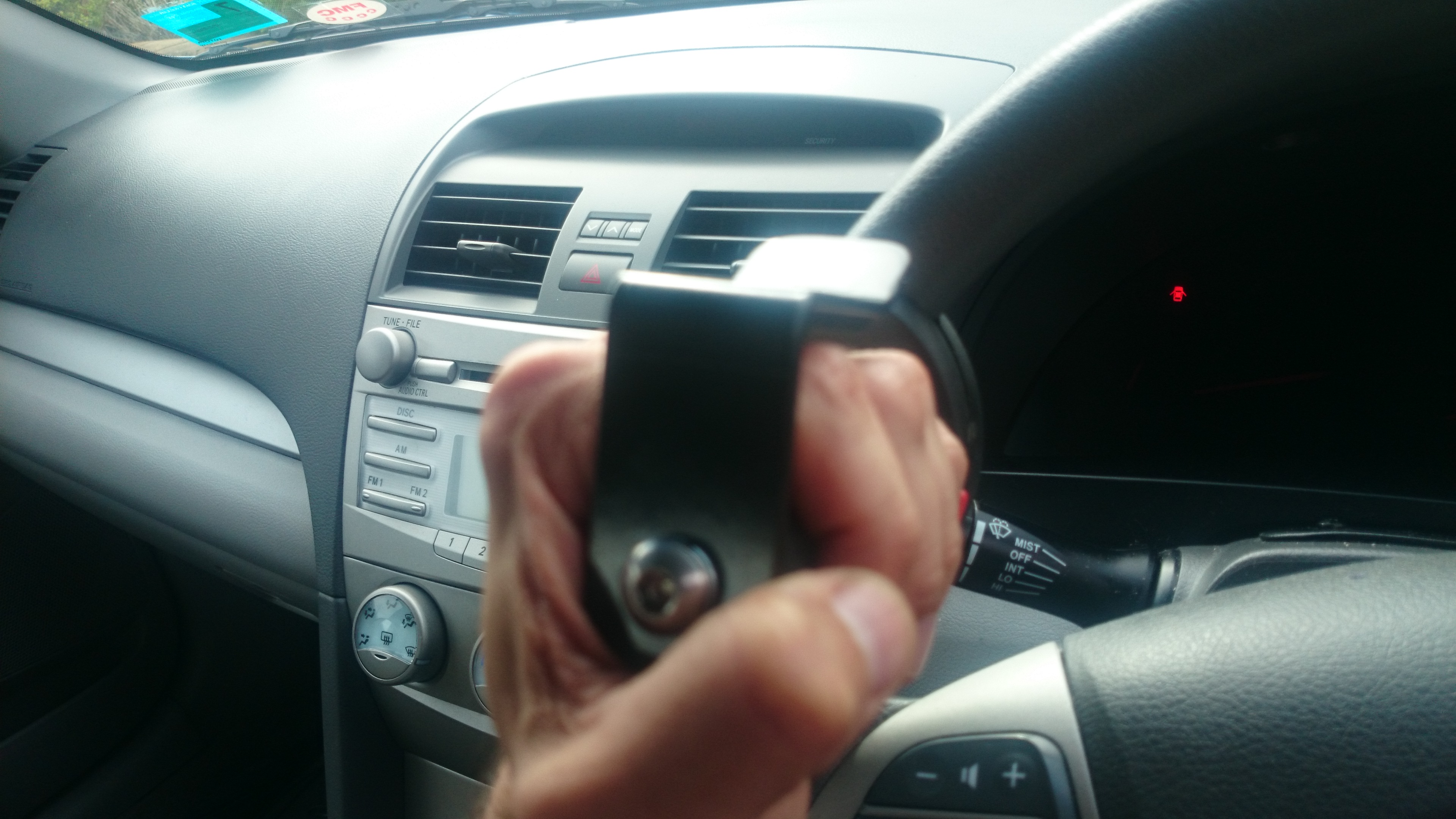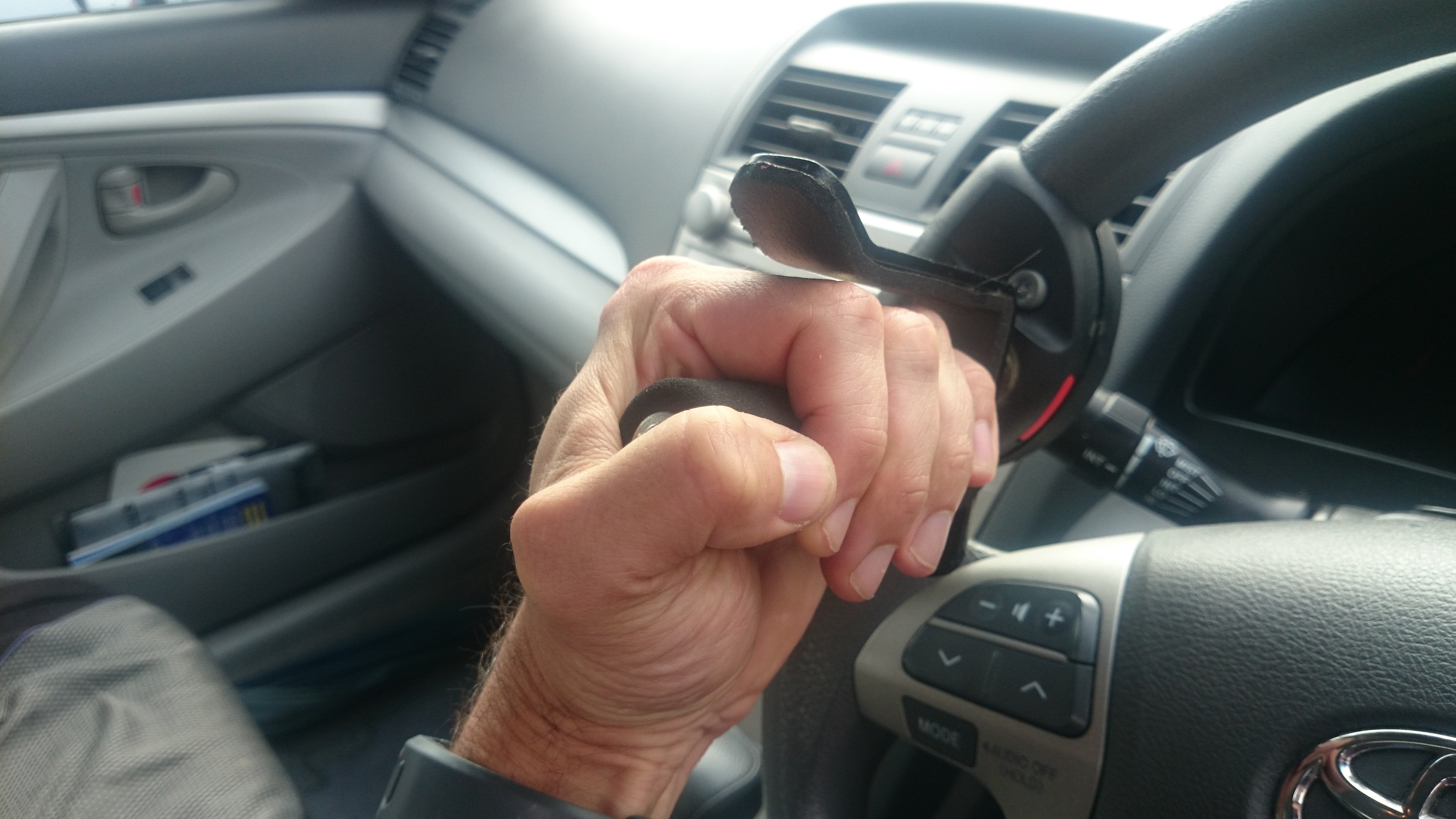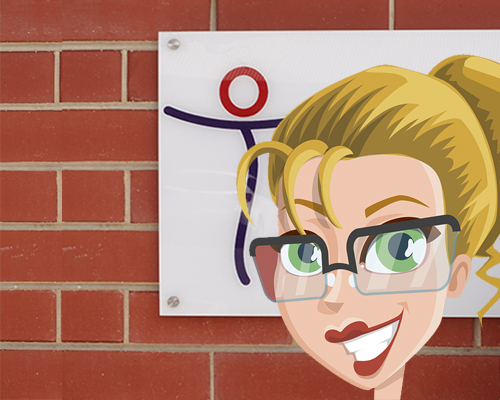This month we are continuing our series on upper limb issues and driving and talking about the benefit of an early referral.
This month we move on to discuss a case story, highlighting how an early referral could have saved significant stress and mental health issues and promoted an earlier return to work and general independence and well-being.
If you have not had the opportunity, this is the third blog post in our upper-limb series. The first post is a client story talking about her experiences regaining her license after amputations of her hands. The second post was last month and was a video post giving an overview of the occupational therapy driver assessment and rehab interventions for upper limb issues.
Our client and the background:
Our client, who we will call Bill, was working in the same job that he had done for 30 years. Every day he worked doing the same duties. On this particular day, he was attending to a metal cable being fed into a guide. As he always did, he ran his gloved hands along the cable to clear off dirt as it sped along into the guide. Unfortunately, on this day the cable has a spur. The spur grabbed his gloves and took Bill and his hands into the guide. It immediately amputated the fingers of the left hand. His right hand became caught in the guide and he was stuck with his hand overhead for 4 hours. The injuries resulted in extensive right-hand repair and including pinning of the middle finger, skin grafts and amputation of the index and ring finger.
For those with a medical background (and you are able to read this jargon) the following was reported in the medical records:
- R) hand: IF and RF terminalisation, MF PIP joint volar plate arthroplasty, stabilisation and lateral slip extensor tendon repairs, LF tip repair SSG, dorsum hand rotation flap
- L) hand: IF and MF terminalisation, RF nail bed repair.
- R) shoulder bursitis
The issues associated with driving:
The injuries occurred in December and he was admitted to hospital for approximately a month. And in this time his license was suspended on medical grounds. He was discharged home to a rural community that did not have public community transport options. His wife does not drive. He had to rely on his daughters for transport around the local community. When he returned to work (on reduced hours) he relied on his employer for transport to and from work restricting his ability to work appropriate rosters. He reported that he needed his license for a return to work and general independence. He had family in Adelaide and planned to drive to and from there regularly, but was cut off from them without a license.
However, the biggest issue was that of his mental health. One of Bill’s main life roles was that of the driver. Relying on others messed with his feelings of self-worth. Bill was depressed and had started medications to assist with his mental health. Not having a license was restricting his return to work, impacting on his role as provider, and impacting on his role as a husband.
The referral:
A referral was received by Bill’s hand therapist in June, 6 months after his accident. This was 5 months after being discharged home and relying on others. At this time, Bill had the following function:
- Reduced flexion and extension of the right wrist, which appeared to be the result of extensive scar tissue. No such issues in the left wrist.
- Amputations of the fingers as described above.
- The right-hand middle finger had reduced active range of motion and was restricted to small degrees of movement in a half flexed position. The finger had full passive range. The finger had a slight deviation to the little finger. There was evident oedema in the right middle finger further restricting range.
- The little finger on the right had full active flexion to the palm, however, this took significant force by Bill.
- As a result, grip ability is reduced in the right hand as he was unable to make a closed fist with the middle finger and reduced grip with the little finger. His grip was tested around a 9cm circumference cylinder, which he was able to grip with only minor issues. 3+/5
- The left-hand grasp strength was 4+/5
- Bill had the full sensation of light touch. He experienced no pain in testing however reported hypersensitivity to particular surfaces and experienced throbbing pains at times.
- Bill had been issued with scar management gloves. The neoprene fabric of the glove reduced grip.
The medical team had waited to refer until they thought Bill had the appropriate function to possibly grip a standard steering wheel.
The assessment:
Bill performed very well, and the referrers were correct. Bill had reached the appropriate standard in his hands to control a steering wheel without modifications. He was able to turn the key and apply the secondary controls such as the indicators and windscreen wipers. The assessment found that a steering wheel cover widened the diameter of the steering wheel, which in turn made a grip of the wheel easier to maintain and increased safety.
Bill was reissued with his license immediately after the assessment and had a returned to driving soon after. This includes driving to and from work. This lead to an increase in hours. The return of his license has also seen a reduction in his mental health medications.
WHAT COULD HAVE BEEN GAINED FROM AN EARLIER DRIVER ASSESSMENT?
The outcome the assessment was extremely positive for Bill. But, what could have been? What if Bill had of been referred one to two months after his injuries, instead of six?
Could Bill have returned to driving sooner?
Could Bill avoided aspects of his mental health issues?
For Bill, could have modifications and equipment helped Bill back behind the wheel earlier?
In my opinion, the answer is……. YES!
Occupational therapists trained in driver assessment can look into these types of issues. An early referral after an injury or medical condition can help determine the appropriate time to instigate an on-road driving assessment. A referral to a driver trained OT in the early stages after injury looks at what the hurdles to driving might be. The initial assessment takes baseline measurements and looks at immediate compensatory options, but it also looks at future options as function returns.
In my opinion, as soon as Bill’s cuts had healed, even if he did not have an appropriate grip of his hand, a referral to a driver trained OT at this stage would have been a huge advantage. Possibly, the use of a tri-spin spinner, or fork spinner steering aid, if only for a short term, may have allowed him an immediate return to independence and his role as driver and provider to his family. Secondary to this, there may have been a reduction in mental health side effects from his condition.
A tri-spinner
A tri-spin spinner grips the wrist and palm of the hand and does not require grip via the fingers. As long as there is active shoulder movement in just one shoulder, a tri-spin may assist drivers with bilateral forearm, wrist and hand issues return to driving earlier than thought by rehab staff. In combination with indicator extensions for use in the not-as-functional upper limb (arm), as long as there are some gross movements and control, independence in the community may not be a significant issue, like it was for Bill.
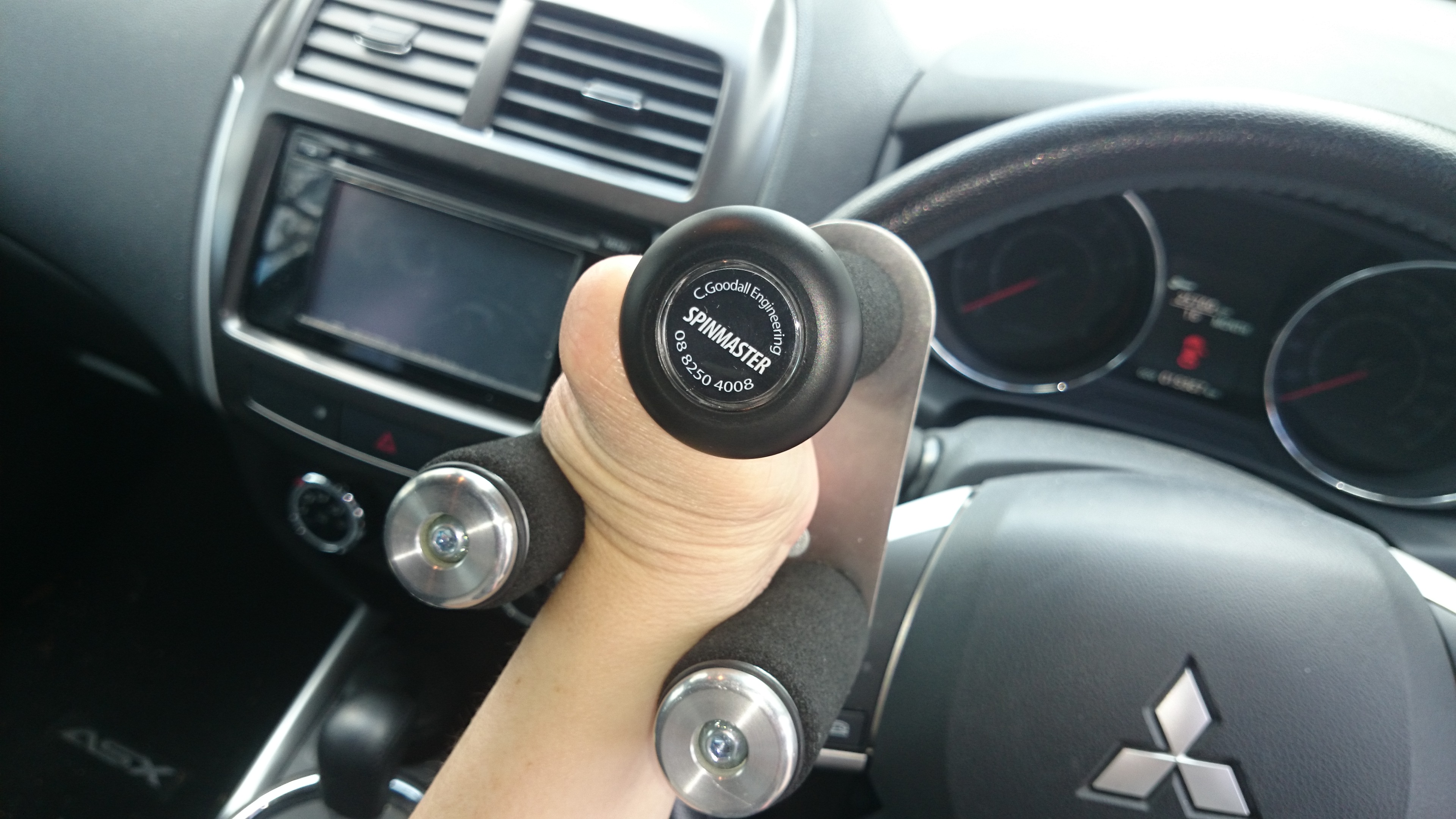
An early referral could have resulted in the use of a tri -spin spinner knob and an earlier return to driving
A Fork Spinner
The fork spinner might be another option that Bill could have taken advantage of. The fork spinner grips either side of the palm, again not requiring the grip of the fingers. With the spinner in the left hand and the right hand applying the indicator, driving could have been achieved earlier. As a result, the secondary health issues may have been avoided. For this type of spinner, there needs to be a strong wrist, but again, the grip of the hand can remain non-functional.
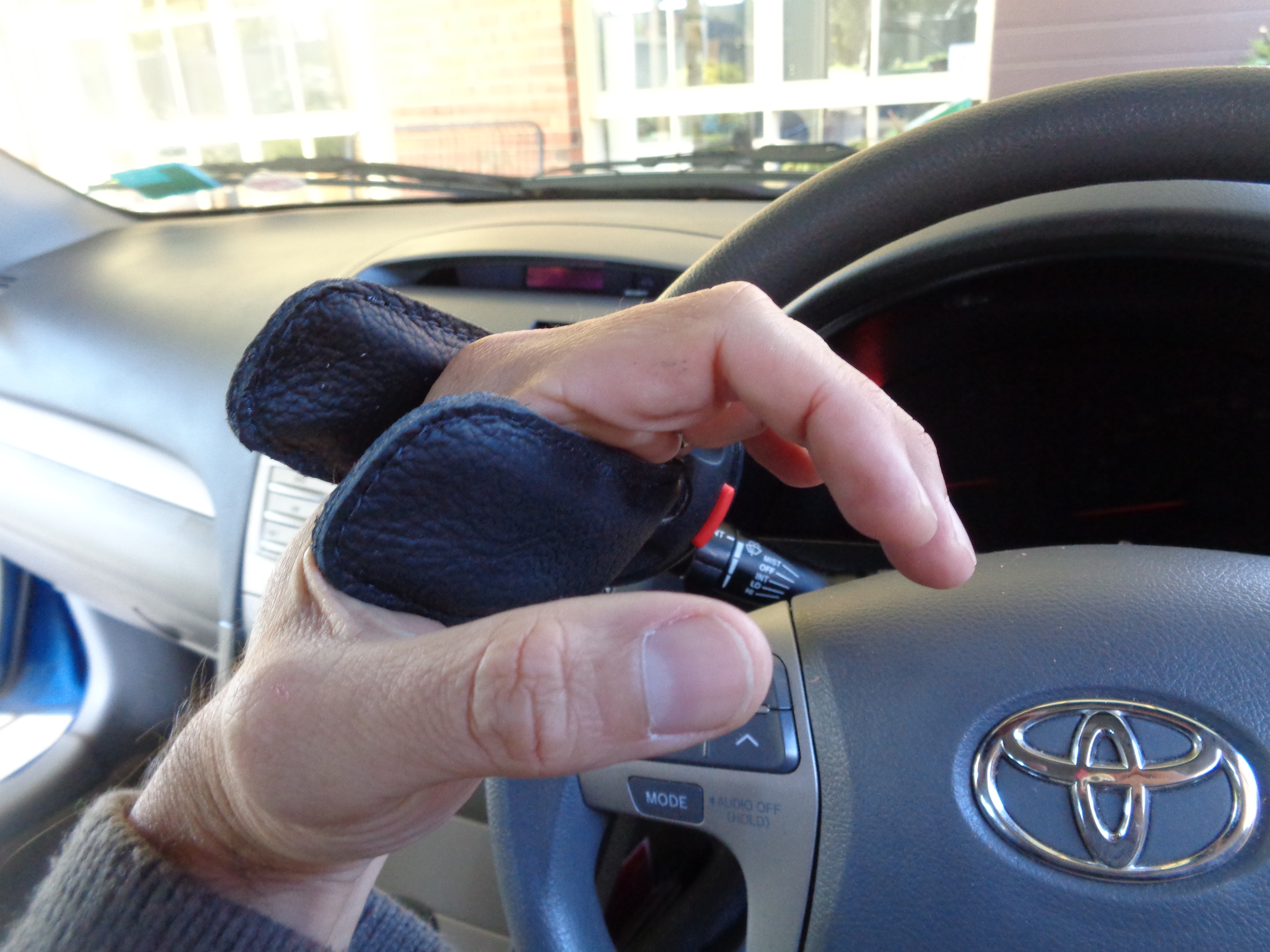
An early referral could have resulted in an earlier return to driving trough the use of a fork spinner knob
Other modified spinners
But what about if Bill was referred when he had some grip, but, his grip wasn’t very strong? Could a driver OT assist then? To answer the question, the Driver OT would have conducted an assessment for a modified spinner that assists grip such as those pictured.
Standard Spinner Knobs
Bill had a significant injury, but what happens if you broke your arm? That arm may be in plaster and a sling for several weeks. A simple straight forward spinner knob might be the answer. This provides a full and constant grip of the steering wheel for safe and effective steering. Compared to driving with one arm without a spinner knob, it reduces burden in the shoulder and is much safer in a dangerous situation. Watch out for our special blog series on spinner knobs coming up next month.
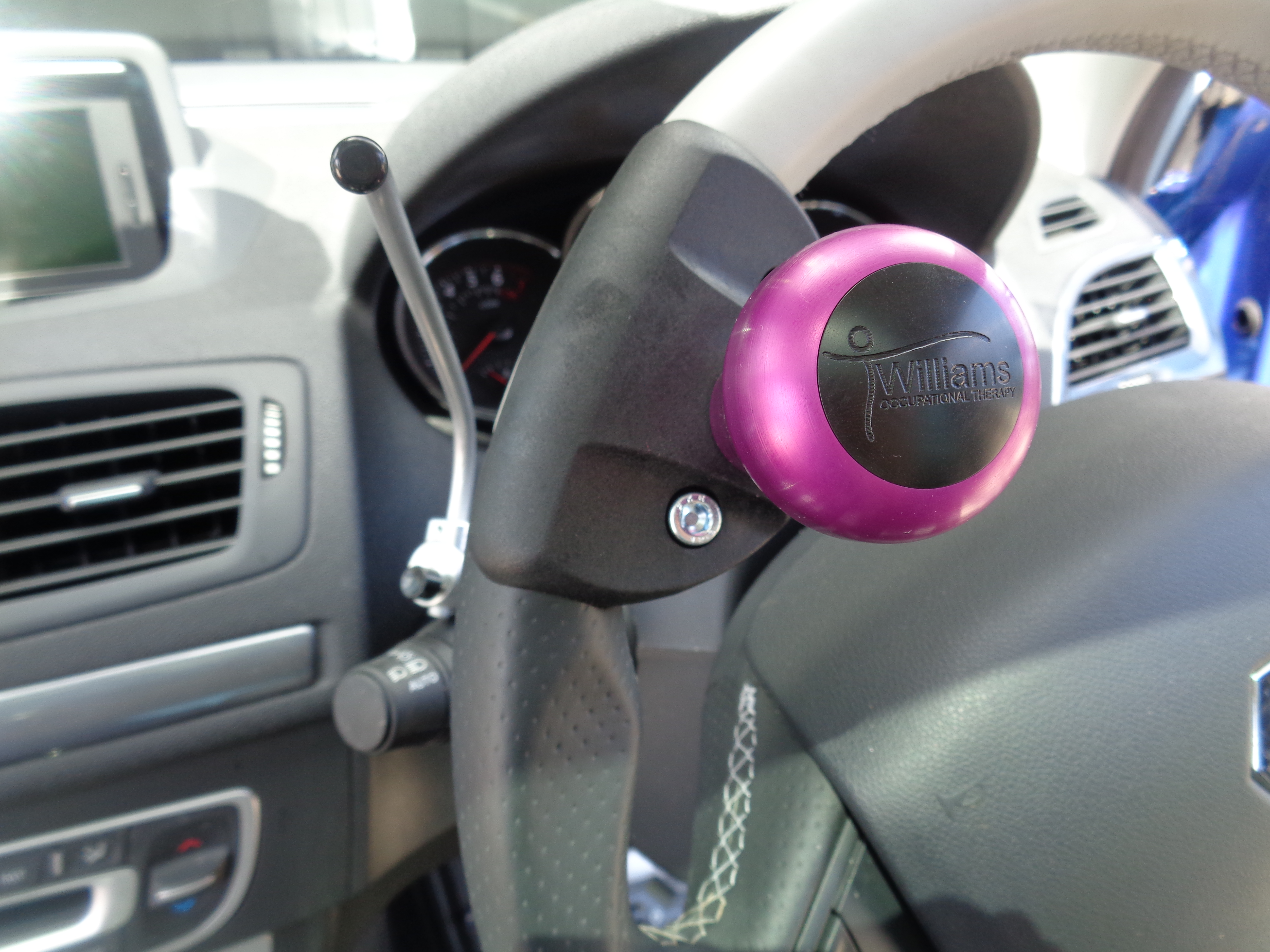
An early referral could have resulted in an earlier return to driving trough the use of a spinner knob and indicator extension
So what is the take-home message?
If you think that right now injury impacts on driving and that being off the road impacts on independence, then it is never too early for an early referral. Waiting for a plateau in the return to function impacts on the driver’s mental health due to not being behind the wheel. Therefore a referral to your local Driver Trained Occupational Therapist might assist overcome these immediate issues. Spinner knobs and indicators extensions can be temporary, so they can last only as long as the recovery from the medical issue.
The overall impact on health may be significant. An early referral might result in the following:
- Increased community mobility
- Independence for social outings
- Possible return to work sooner
- Independent shopping
- Independent transport to medical appointments.
- Increased mental health
- Reduction in mental health medications
- Reduction in the need for psychological intervention
- Reduced travel expenses for the insurer
- Reduction in family burden associated with transportation.
If you are unsure if you can drive and are waiting for a complete return of function, Williams OT could help. Are you a health professional and are now reconsidering a driver referral for a client, Williams OT could help. If you are in South Australia or close by and you need an OT service that knows all about driving when faced with a medical issue, because that is all they do, Williams OT is your local service. An early referral could have a significant impact. You can contact Williams OT here.

